chapter 1 student movement for racial equality - Campus Activism
chapter 1 student movement for racial equality - Campus Activism
chapter 1 student movement for racial equality - Campus Activism
You also want an ePaper? Increase the reach of your titles
YUMPU automatically turns print PDFs into web optimized ePapers that Google loves.
administration <strong>for</strong> its slow pace of change and failure to ensure that the constitutional<br />
rights of blacks in the Deep South were upheld.<br />
Middle class blacks were the ones who would benefit from the civil rights<br />
<strong>movement</strong>; their ability to address the economic issues which affected most of the new<br />
black working class participants 11 posed a threat to the American status quo. As black<br />
unity strengthened and became more radicalized, the government realized it would have<br />
to make concessions to avoid a revolution; thus the 1964 Civil Rights Act. With its<br />
passage, the first stage of the black freedom <strong>movement</strong> ended because it had achieved its<br />
liberal goals.<br />
The <strong>student</strong> civil rights <strong>movement</strong> did not end at UT in 1964 with the integration<br />
of dormitories. Many Austin businesses remained segregated in 1964, as did some<br />
university-owned housing. However, the <strong>movement</strong> did begin to change at this time.<br />
Working class and poor black involvement in the civil rights <strong>movement</strong> necessitated a<br />
trans<strong>for</strong>mation. The gains of 1964 threatened to divide educated <strong>student</strong>s and middle<br />
class leaders from the poor blacks involved. After 1964, blacks in the ghettoes began<br />
rioting and were brutally repressed. Black power began to emerge in the mid-1960's and<br />
served to unify members of the black freedom <strong>movement</strong> who were beginning to be<br />
separated by socio-economic status. This black power <strong>movement</strong> also served to continue<br />
the demand <strong>for</strong> change in the status of blacks. To their credit, the SNCC activists<br />
continued in their dedication to the black underclass through voter registration drives and<br />
the Freedom Schools in the mid-1960's. The <strong>student</strong> struggle against racism will be<br />
discussed further in detail in Chapter 3: From Civil Rights to Black Liberation (1964-8)<br />
as well as in subsequent <strong>chapter</strong>s.<br />
11 Poor blacks, who could not af<strong>for</strong>d to sit at a desegregated lunch counter or see a movie in an integrated<br />
theater, did not gain much by this social change which did not include any redress of economic in<strong>equality</strong>.<br />
17



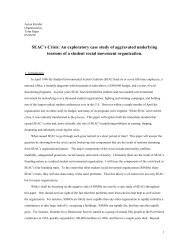
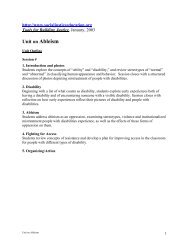

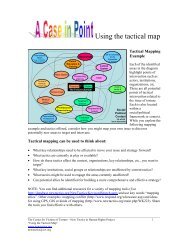
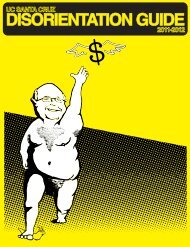

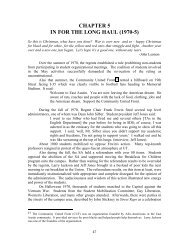


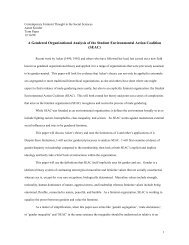

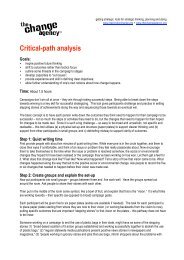

![Meaningful Student Involvement Research Guide [pdf] - SoundOut](https://img.yumpu.com/38822556/1/190x231/meaningful-student-involvement-research-guide-pdf-soundout.jpg?quality=85)